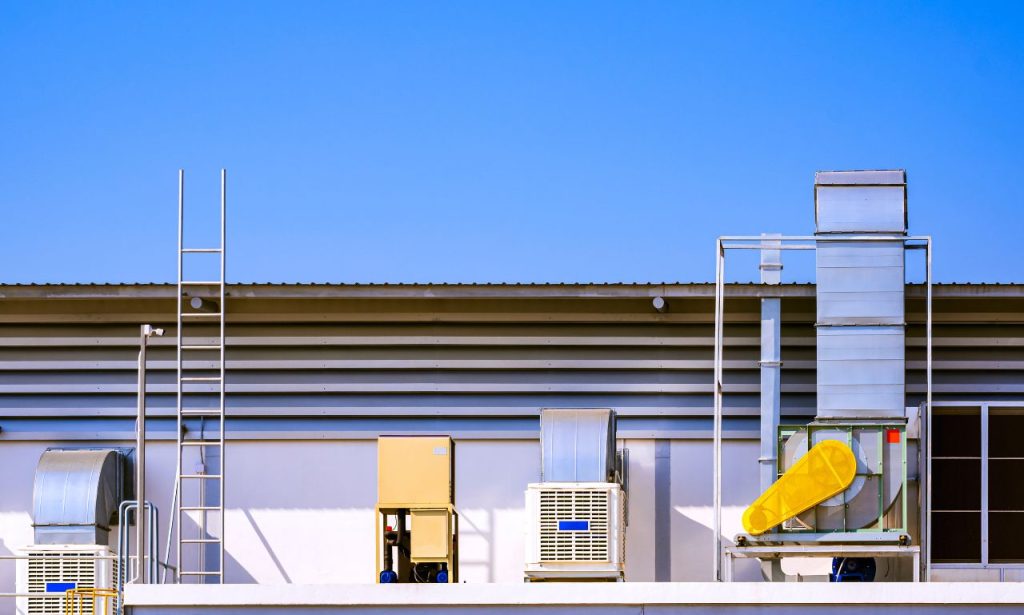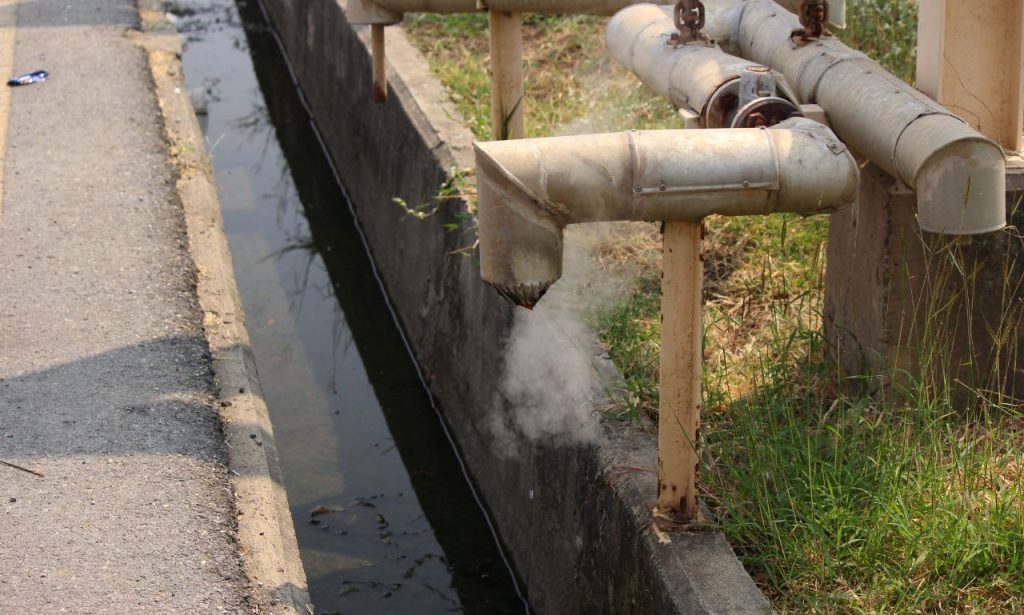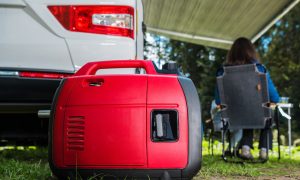You step inside, escaping the scorching summer heat, and breathe a sigh of relief as the cool air from your evaporative cooler washes over you. But wait! Is that a musty smell? Is the air feeling a bit…heavy? Perhaps your evaporative cooler isn’t performing at its peak. Could the culprit be incorrect vapor pressure?
Understanding the ideal evap system vapor pressure for your specific setup can be the difference between a comfortably cool oasis and a humid, inefficient disappointment. This comprehensive guide will delve into the intricacies of evaporative cooler pressure, empowering you to optimize your system for maximum cooling efficiency and comfort.
How Your Evaporative Cooler Works
Before we dive into the specifics of vapor pressure, let’s take a moment to appreciate the elegant simplicity of evaporative cooling. Unlike conventional air conditioners that rely on energy-intensive compressors and refrigerants, evaporative coolers harness the natural power of water evaporation to cool the air.
Here’s a breakdown of the process:
- Water Absorption: Dry air is drawn into the cooler and passes through water-saturated pads. As the air moves through the pads, it absorbs some of the water, initiating the evaporation process.
- Evaporation and Cooling: For water to transition from a liquid to a gaseous state (water vapor), it requires energy. This energy is drawn from the surrounding air, effectively lowering its temperature.
- Cool Air Delivery: The now-cooled and humidified air is circulated throughout your space, providing a refreshing respite from the heat.
The Crucial Role of Vapor Pressure in Evaporative Cooling

Now, let’s introduce the star of our show – vapor pressure. In the context of evaporative cooling, vapor pressure refers to the pressure exerted by water vapor in the air. It’s a measure of the air’s capacity to hold moisture.
Think of it this way: Imagine a sponge. A dry sponge can readily absorb a significant amount of water. However, as the sponge becomes more saturated, its capacity to absorb additional water diminishes.
Air behaves similarly. Dry air, with low vapor pressure, has a high capacity to absorb moisture. As the air absorbs more water vapor during the evaporative cooling process, its vapor pressure increases, and its capacity to absorb additional moisture decreases.
This relationship is crucial for understanding why maintaining the correct evap system vapor pressure is essential for optimal cooling:
- Low Vapor Pressure: Low vapor pressure indicates dry air with a high capacity for moisture absorption. This translates to efficient evaporative cooling, as the air readily absorbs water from the pads, leading to significant temperature drops.
- High Vapor Pressure: High vapor pressure indicates humid air with a limited capacity for additional moisture. In this scenario, the air struggles to absorb water effectively from the pads, resulting in less efficient cooling and a potentially uncomfortable, clammy environment.
What Should the Evap System Vapor Pressure Be?
You’re probably wondering, “Okay, I get it. Vapor pressure is important. But what should the evap system vapor pressure be in my specific case?”
Unfortunately, there’s no one-size-fits-all answer. The ideal vapor pressure for your evaporative cooler depends on a few key factors:
- Climate: The humidity levels in your region play a significant role. Drier climates generally allow for lower vapor pressures, while more humid climates necessitate slightly higher vapor pressures to maintain effective cooling.
- Cooler Size and Airflow: Larger coolers with higher airflow rates can handle slightly higher vapor pressures compared to smaller units.
- Personal Comfort Levels: Ultimately, the ideal vapor pressure also comes down to personal preference. Some individuals prefer slightly drier air, while others are comfortable with a bit more humidity.
As a general rule of thumb, aim for an evap system vapor pressure within the range of 0.5 inches of mercury (inHg) to 0.8 inHg. This range typically provides a good balance between cooling efficiency and comfortable humidity levels.
Tips for Achieving Optimal Vapor Pressure
Now that you have a target vapor pressure range in mind, let’s explore some practical tips to help you achieve and maintain optimal performance from your evaporative cooler:
1. Monitor Humidity Levels: Invest in a hygrometer to monitor the relative humidity levels in your home. This will give you a good indication of your indoor air’s moisture content.
2. Adjust Water Flow Rate: Most evaporative coolers allow you to adjust the water flow rate to the pads. In drier climates or when seeking maximum cooling, increase the water flow to promote more evaporation. In more humid conditions, slightly reducing the water flow can help prevent excessive humidity buildup.
3. Ensure Proper Ventilation: Evaporative coolers work best in well-ventilated spaces. Open windows or doors slightly to allow for air circulation and prevent excessive humidity buildup. However, avoid excessive ventilation that could negate the cooling effect.
4. Maintain Your Cooler: Regular maintenance is key to optimal performance. Clean or replace the cooler pads as needed, and ensure the water pump and distribution system are functioning correctly.
5. Consider a Water Bleed-Off System: Some advanced evaporative coolers feature water bleed-off systems. These systems automatically drain and replenish a small amount of water from the sump, helping to prevent mineral buildup and maintain optimal water quality for efficient evaporation.
Troubleshooting Common Vapor Pressure Issues

Even with the best intentions, you may encounter occasional issues with your evaporative cooler’s vapor pressure. Here are some common problems and their potential solutions:
Problem: The air feels excessively humid and clammy, even with the cooler running.
Potential Causes:
- High humidity levels: Check the relative humidity in your area. If it’s already high, your cooler may be struggling to reduce it further.
- Insufficient ventilation: Ensure adequate ventilation to allow for air circulation and prevent moisture buildup.
- Excessive water flow: Try reducing the water flow rate to the pads.
Solution:
- Monitor humidity levels and adjust ventilation accordingly.
- Reduce the water flow rate to the pads.
- Consider using a dehumidifier in conjunction with your cooler in extremely humid conditions.
Problem: The cooler doesn’t seem to be providing adequate cooling.
Potential Causes:
- Low humidity levels: While this may seem counterintuitive, extremely low humidity can sometimes hinder evaporative cooling. The air may be so dry that it evaporates water from the pads too quickly, without effectively cooling the air stream.
- Inadequate water flow: Ensure the water pump is functioning correctly and the pads are adequately saturated.
- Dirty or clogged pads: Clogged pads restrict airflow and reduce evaporation efficiency.
Solution:
- Check and adjust the water flow rate.
- Clean or replace the cooler pads.
- In extremely dry climates, consider adding a humidifier to slightly increase humidity levels.
Conclusion
Understanding and managing your evap system vapor pressure is key to unlocking the full potential of your evaporative cooler. By finding the sweet spot for your specific climate and comfort preferences, you can enjoy refreshing, energy-efficient cooling throughout the hottest months.
Remember to monitor humidity levels, adjust water flow rates, and maintain your cooler regularly. With a little attention and care, your evaporative cooler can provide a welcome oasis from the heat, keeping you cool and comfortable all summer long.
ALSO READ: What Cars Are Hardest to Steal?
FAQs
A: While evaporative coolers are most effective in dry climates, they can still provide some cooling relief in humid environments. However, it’s crucial to manage expectations. Don’t expect the same dramatic temperature drops as you would experience in a dry climate. Focus on increasing ventilation and potentially using a dehumidifier in conjunction with your cooler.
A: The frequency of pad cleaning or replacement depends on factors like water quality and usage. As a general guideline, inspect the pads monthly and clean them as needed. Consider replacing the pads at least once per cooling season or more frequently if you notice reduced performance or mineral buildup.
A: Yes, you can typically leave your evaporative cooler running overnight, provided you take a few precautions. Ensure adequate ventilation to prevent excessive humidity buildup. Consider using a timer to automatically turn off the cooler during the cooler nighttime hours.




